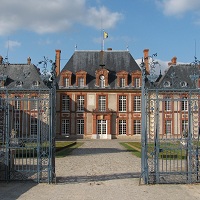
Versailles has such star power as both a town and a palace that it eclipses the surrounding countryside on most maps. Beyond Versailles the eye tends to follow the Seine out of the department of Yvelines as it squiggles east toward Normandy, leaving the zone further southeast of Paris to appear as though lost in valley and woods.
Indeed it is… Lost, but easily found from Paris on a daytrip or better yet an overnight into the Chevreuse Valley.
The town of Chevreuse serves as capital of the Regional Natural Park of the Upper Chevreuse Valley (Haute Vallée de Chevreuse), which encompasses a portion of the valley of the narrow Yvette River.
Regional Natural Park status doesn’t mean that the valley is all forest and wilderness; it’s rather a designation that protects the zone’s landscape, agriculture and woodlands and that controls the development of its towns and villages, all the while allowing its castles to stand out as they have for hundreds of years.
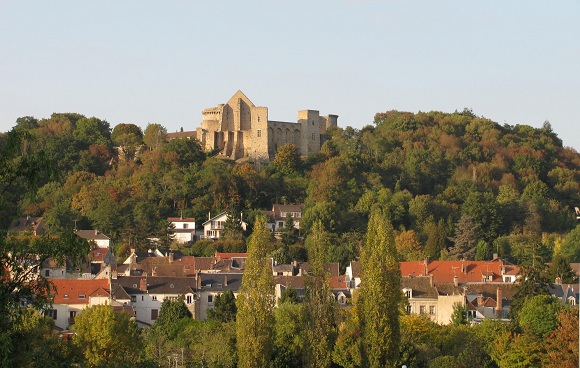
The park’s main tourist office is in the medieval fortress Chateau de la Madeleine that overlooks Chevreuse, a pleasant valley town of 6000 twelve miles southeast of Versailles, 25 miles southeast of Paris. The suburban train line RER B extends south from Paris to Saint-Rémy-lès-Chevreuse, 1½ miles from Chevreuse. (See “Logistics” below)
Despite Chevreuse’s attraction for a pleasant stroll, lunching options, and a hike up to the castle, the town isn’t excursion-worthy by itself. But Chateau de Breteuil, several miles away, is.
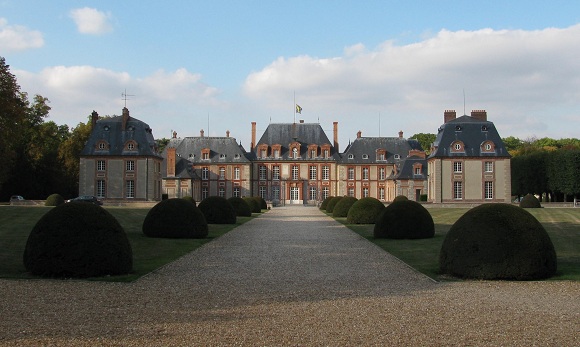
That may be a standard and easy refrain of the heirs of historical properties open to the public, a post-19th-century form of noblesse oblige. Yet Mr. de Breteuil, born in 1943, has indeed devoted his much of his adult life to safeguarding and sharing the honor and, where possible, the glory of his home. Mr. de Breteuil not only talks the talk but also walks the walk, it seemed to me as he showed me around his chateau one afternoon after lunching together in Chevreuse.
“Call me Henri,” he said, when we first met.
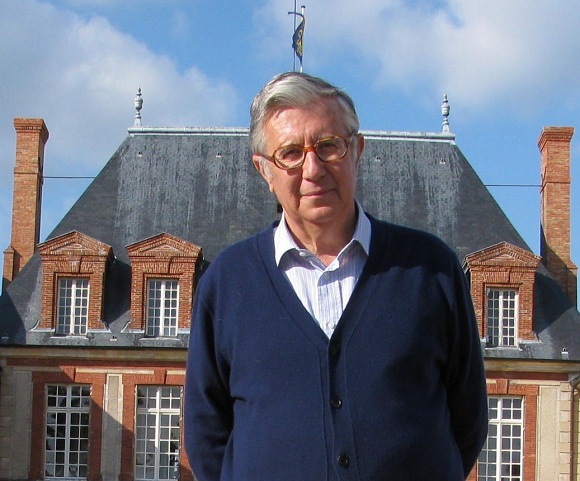
Inside the chateau, visitors encounter assorted ancestors (government ministers, ambassadors, bishops, etc.) and prestigious acquaintances (Louis XVIII, Proust) of the Breteuil family in the form wax figures representing scenes in the life of the chateau or of the family.
As fascinating as it is to an American to learn of a 400-year family connection with a historical property, the most telling aspects of Mr. de Breteuil’s ownership/ trusteeship/ stewardship come from his own lifetime, in particular the difference between his own ties to Breteuil and his late father’s desire to flee such ties.
Mr. de Breteuil’s father saw the ancestral home as a ball and chain prohibiting him from living out his dreams, for not only was he the heir to the Breteuil name but also heir to the New World since his mother was American.
After his mother’s death (his father had died previously), the elder Breteuil went to the United States to settle her estate and decided to settle there himself along with his wife and young Henri. (I call him Henri here only to avoid the confusion with his father but otherwise he’s still Monsieur de Breteuil to me.) But his wife preferred to stay in France, where she directed a theater and where, according to Henri, she envisioned their son’s future. The couple divorced and Henri’s father soon remarried an American, as Henri’s grandfather father had, but this time with the intent of staying in the United States, where he had a second child, Henri’s half-sister. His father wished to sell the chateau, but Henri, in his 20s, decided to take on the full responsibility of restoring and maintaining the ancestral home, joined soon in his devotion but his wife Séverine. Take it if you’re that attached to it, his father more or less said.
(As a youth, Henri spent summers in the United States visiting his father and, rest assured, is quite fond of Americans.)
Together Henri and Séverine restored, renovated and reinvented Chateau de Breteuil to open it and its grounds to the public as we see it today. Séverine de Breteuil passed away in 2009.
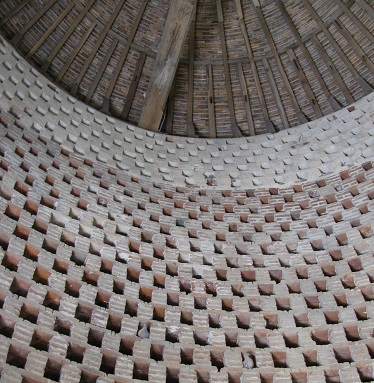
The current chateau was built largely in the early 1600s, replacing the ruins of a fortified castle. Of the medieval fortified castle only the dovecote (colombier), with its 3200 pigeon niches, remains, dating from the end of the 15th century. It now houses an exhibit “Breteuil à Table,” with 3D reconstitutions of renowned paintings of mealtime scenes from the Middle Ages to the 19th century.
The chateau itself, built of brick and stone, was then called the Chateau de Bévillers. It took on the Breteuil name when inherited by Claude-Charles le Tonnelier de Breteuil in 1712. Successive partitioning of the property in the 20th century and finally, in 1967, between Henri and his half-sister, have amputated the Breteuil domain of much of its original land, yet the heart of historic Breteuil—the chateau, surrounding buildings and landscaped park—remain as part of the 185 acre estate.
Breteuil, like other private homes open to the public, offers a glimpse into the interplay of historical nobility and contemporary tourism. And if you’re fortunate enough to encounter Henri-Francois de Breteuil along the way—not an unusual occurrence—you will also gain insights into the personal and particularly French sense of heritage and transmission.
Chateau de Dampierre
Dampierre is another private chateau in the Chevreuse Valley, just a few miles from Breteuil. Designed by Jules Hardouin Mansart in the 1680s for the Duc de Chevreuse it is more imposing than Breteuil, as is to be expected from the architect who left major markers of French architecture during reign of Louis XIV, including the Hall of Mirrors and the Grand Trianon among other additions at Versailles, Place Vendome, Place des Victoires, and the dome of the Invalides in Paris. However, it has less the personal, emotive stamp of its owner than Breteuil. Dampierre is open from April to September for guided tours only but makes for a photogenic drive-by at anytime.
Abbey of Vaux de Cernay
For an overnight consistent with the historical and natural theme of a visit to the Chevreuse Valley, look about four miles southeast of Breteuil and Dampierre to the Abbey of Vaux de Cernay.
The hotel is built around the ruins of the abbey, which was founded in the early 12th century by monks from Savigny who then aligned themselves with Cistercian rules. The abbey’s main structures were built as the institution grew from the 12th through 14th centuries. Pillaged during the Revolution, its ruins were later protected and the full domain reconstituted under the ownership of the Baron Rothchild family beginning in 1873.
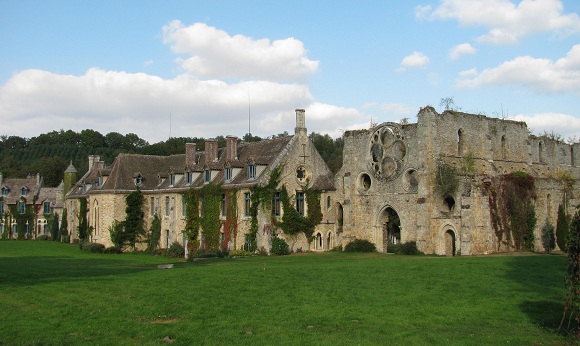
It is now owned by Les Hotels Particuliers, a hotel group (part of the Savry Group) that transforms formerly more or less abandoned private properties of historical value into hotel complexes. The group currently has fourteen such properties in France, mostly in locations that are, at least for the time being, little known to American visitors.
Remaining usable portions of the abbey have been integrated into the public spaces of the hotel while the roofless, windowless walls of the abbey church testify to both its enormity and the 800 years of history that have passed this way. The public spaces draw inspiration or actual architecture from the Gothic period. The bedrooms of this superior 3-star establishment range from the comfortably monastic (125€) to the expansive apartment (655€). They are decorated without extravagance but in the spirit of restful tradition. The restaurant beneath the Gothic arches serves traditional French cuisine.
If visiting the area by car, Vaux de Cernay, which lies between the chateaux of Breteuil and Rambouillet, is worthy of a coffee/teatime stop even if not spending the night.
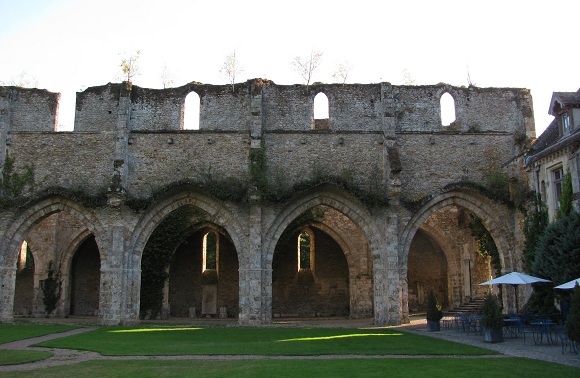
Rambouillet
Rambouillet is located just outside of the Regional Natural Park of the Upper Chevreuse Valey, but its close enough (seven miles from Cernay, ten miles from Chevreuse) and green enough to be associated with the above explorations.
The Chateau de Rambouillet has the status of a Presidential Estate, though it’s rarely been used by recent French presidents other than for the occasional meeting with heads of state or international conferences. It is otherwise open to the public on guided tours and is the point of departure for hikes and biking into the Forest of Rambouillet.
At its heart Rambouillet is a fortified castle built in the late 14th century though it has been repeatedly modernized over the centuries. King Louis XVI purchased it in 1783 to take advantage of the hunting grounds of the nearby forest. Though the king was tone-deaf to the troubles that would soon be brewing in his kingdom, he was up to date on the science of selective breeding of farm animals. Under him, Swiss cows, Spanish and African sheep and angora goats grazed here. Napoleon, who also enjoyed Rambouillet, added horses and buffalos to the farm. The National Sheepfold (Bergerie nationale) of Rambouillet still exists.
Louis XVI also had a dairy built for Marie-Antoinette’s pleasure, as with the Queen’s Hamlet at Versalles, and Rambouillet’s Queen’s Dairy, without the cows, can also be visited. Visits of the interior of the castle, the Queen’s Dairy and an exquisite thatched cottage can be visited by guided tour only, departing almost hourly. Closed Tuesday.
Green travels continue in the 50,000 acres of Forest of Rambouillet that spread out beyond the castle’s park. Information on hiking and biking routes on the forest are available at the tourist office near the castle.
Ferme de Coubertin
Exploring the Chevreuse Valley and the Forest of Rambouillet is green enough to make a visitor want to find some fresh goat or cow cheese to make a picnic. And that’s possible at the Ferme de Coubertin, a farm with 60 milk cows and 25 goats along with rabbits and pigs, just a half-mile from the Saint Remy les Chevreuse RER train station, where this report started.
Along with purchasing fresh dairy products, you can visit the farm and watch the cows and goats being milked in late afternoon.
With proper timing you can stop at Coubertin Farm to pick up a dairy picnic before setting out to visit the valley or visit the cows and purchase some cheese before taking the train back to Paris, as I did.
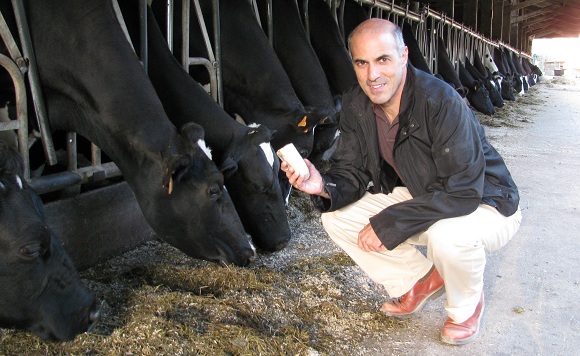
Logistics for visiting the Chevreuse Valley and Rambouillet
Weekending Francilians, as inhabitants of the Paris region (Ile-de-France) are called, are likely to have a car when visiting the Chevreuse Valley and so are able to visit the various sights mentioned in this article without much logistical consideration. If you’ve got wheels, use them.
Using public transportation and taxis requires more forethought but is possible as well as adventuresome.
The easiest way to reach the area by public transportation is to take the RER suburban train line B to Saint-Rémy-lès-Chevreuse, then setting off by taxi or by bus (Sundays only April-Oct.). RER B runs north-south through Paris (Gare du Nord, Chatelet, Saint-Michel, Luxembourg, etc.), with one of its branches (verify that you’re on the right one) reaching Saint-Rémy-lès-Chevreuse in 50-55 minutes.
The town of Chevreuse is 1.5 miles from the Saint-Rémy-lès-Chevreuse RER station, so that might be your first stop. There’s regular bus service between Saint-Rémy (from the station) and Chevreuse and less regular to Choisel (then a walk to Breteuil), Dampierre, Cernay and Rambouillet. You can always get somewhere by bus, if not everywhere, and in any case close enough on a nice day to finish on foot (excluding Rambouillet). A sweet smile in the parking lot at Breteuil might also get you a ride to your next destination.
If sans bus (and sans smile) you might take a taxi directly to the Chateau de Breteuil from Saint-Rémy, 3 miles away. Vaux de Cernay Abbey is a few miles beyond it in one direction, Dampierre a few miles in another.
On Sundays and public holidays from the first Sunday in April to the last Sunday in October, a bus service called Baladobus makes the rounds several times per day from the Saint-Rémy-lès-Chevreuse RER station to the Chateau de Breteuil, 20 minutes away, as well as to Chevreuse, Vaux de Cernay, Dampierre. With careful planning by bus (inquire at tourist office for schedule) it’s possible to hit several of the highlights of the immediate area on a leisurely day or a Saturday-Sunday or Sunday-Monday overnight.
An alternative approach without a car is to begin at Rambouillet, reached in a little over an hour by train from Paris leaving from the Montparnasse station. Rambouillet makes for a daytrip on its own.
A 36-hour adventure from Paris can involve arriving at Rambouillet and departing from Saint-Remy-lés-Chevreuse (or vice versa) and visiting the sights in between according to your touring interests.
Official information websites and details
Saint-Rémy-lès-Chevreuse. There’s a tourist information office across from the RER train station, open Wed., Sat., Sun. and holidays.
Regional Natural Park of the Upper Chevreuse Valley
Chateau de Breteuil, Choisel, 78460 Chevreuse. Tel. 01 30 52 05 02. Guided tours set out at 2:30pm daily, with an additional tour at 11:30am Sunday and holidays. Can be visited without a guided tour. A creperie stand is open early April to late October. Picnics are welcome at any time.
Abbey of Les Vaux de Cernay (hotel), 78720 Cernay la Ville. Tel. 01 34 85 23 00.
The Coubertin Farm, Ferme de Coubertin
Yvelines Tourist Information. The sights mentioned in this article are all found in the department of Yvelines, which also includes Versailles, Saint-Germain-en-Laye, Maisons-Laffitte, and other towns east and southeast of Paris.
© 2012, Gary Lee Kraut

